Photographer Eli Koppel, AKA Rufus Mangrove, Is Documenting Flatbush Avenue From End to End
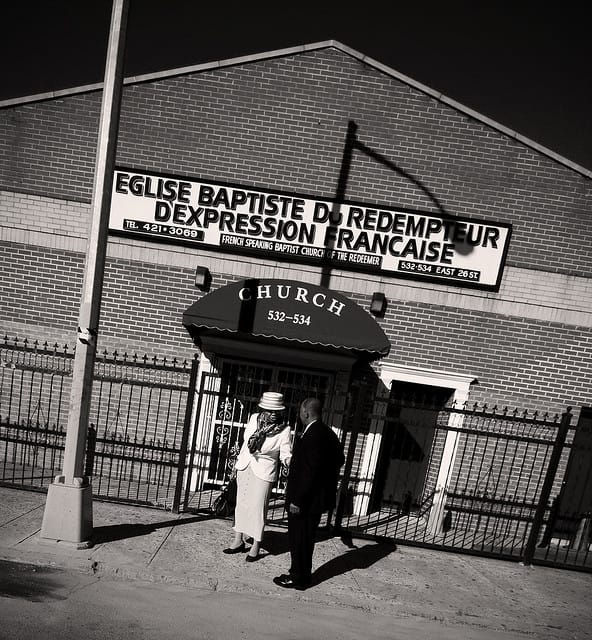

“I started walking down Flatbush with my son when he was born, mostly because I love to walk, to clear my head or whatever,” said local photographer Eli Koppel, AKA Rufus Mangrove. “Then I began seeing this energy on that avenue in particular. It started to create its own personality, one that I’m still learning about.”
As he’s learning about it, he’s taking photos of it. Eli is documenting Flatbush Avenue from end to end, from where you get off the bridge at Flatbush Extension, all the way to the end of the golf course where there’s no place to walk. The project started when he was on paternity leave with his eldest son, Bruce, about three years ago, and continues daily. And Eli says he may never stop.
“For me photography is about where you are,” he explained. “Where I am is I live a block from Flatbush, so obviously I’m going to go there to shoot–there’s always something to see. And I have to shoot something every day.”
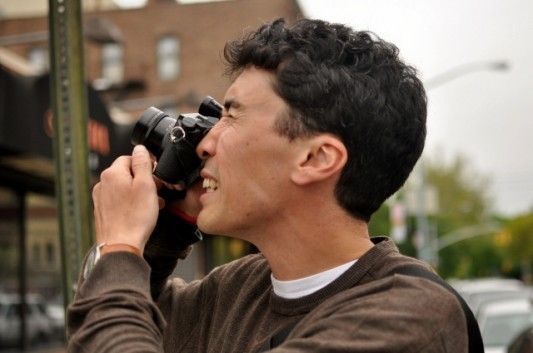
Flatbush Avenue has always been a geographical landmark for Eli, who is originally from Hawaii. After living in Harlem, and briefly in Prospect Lefferts Gardens and Prospect Heights, he and his family settled in their current apartment on Glenwood, and he’s always looked at Flatbush Ave to orient himself.
“In Brooklyn everything for me was always connected to Flatbush–it’s south of Flatbush, north of Flatbush, etc.,” he said. “Then the more I read about it, the more interesting it became. Like near where we live, Amersfort Place, that used to be a part of Flatbush Avenue, and then they changed it, moved it over.”
But the history of the avenue continues to change, and you can see it even in the photos he’s taken so far. The seasons turn over, the people are different, and even the small changes from neighborhood to neighborhood that Flatbush cuts through can be dramatic.
“I noticed on Flatbush there was an energy–the characters, the stores, the neighborhoods,” Eli said. “Depending on what time you go it’s different. Sometimes there’s a sadness. Sometimes people are just hanging out. This is where people work and live. And I thought, what would it be just to document this ‘person,’ this Flatbush ‘thing’? What is this avenue? It’s a learning experience. It sounds like a cliche, but every time I go onto the avenue, I’m trying to introduce myself again to every spot, giving it a certain respect, knowing that I’m just a guy with a camera trying to take some pictures. But I know I’m not going to get every thing, it’s just what I am seeing there, at those moments.”
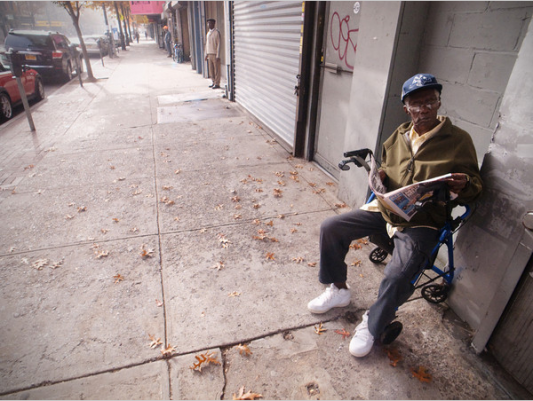
The moments he’s capturing usually include people, but he explains he’s not focusing on them. When Eli first moved to the city, he started to explore photography, which he’d always been interested in, in a new way. Instead of just taking photos of things he thought were interesting, he began to focus on people by themselves. But he found it slightly voyeuristic and objectifying, and he wasn’t happy with the results. Then he started looking at it in a different way, focusing on the place rather than the people.
“If you try to capture the place, you get the people,” he said. “If you try to capture the people, you end up getting nothing.”
And he ends up getting a lot of people. Watching Eli work is fascinating. He walks quickly, with his camera (usually a rangefinder) in hand set to shoot, and almost as soon as he’s lifted it to his face to take a shot, it’s back down at his side and he’s moving on. He gets fairly close to people when he shoots, but sometimes they don’t even notice.
“I’m trying not to be sneaky, because that’s when you get in more trouble,” he said.
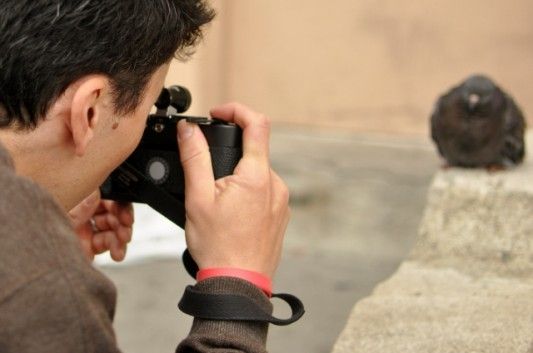
Sometimes, however, they do notice, and over time he’s developed ways of talking to people who confront him. His quiet, polite demeanor helps to disarm people, and he explains what he’s doing–that he’s not trying to sell anything, and to show that he’s “not some weirdo,” he says he carries a book with photos to show people his work, usually as a last resort. He’ll also offer to email them a copy of the photo.
In all his years of street photography, he’s only had a handful of bad interactions, including one in Prospect Heights, when he took a photo of a pit bull that was tied to a parking meter. The owner came out of a nearby store and told Eli that he couldn’t take a photo of the dog without consent.
“So i asked him if I needed permission from the dog,” he explained. “I said it in a way that wasn’t wiseass. But I also knew that it was daylight, and that I could run faster than him.”
The owner persisted and told him to delete the photo, but since it was on film, Eli explained he couldn’t. He told the dog owner to email him, and he would send him a print of the photo, but he never heard from him again.
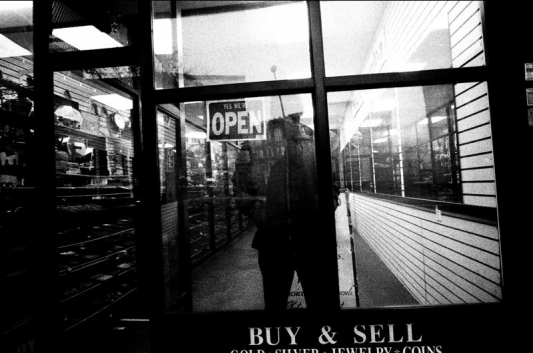
If he wanted to, he could very effectively argue his case about his freedom to take photos of people in a public space. Eli graduated from Hofstra Law, worked for 10 years in the Manhattan District Attorney’s office, and spent a year working on war crimes in Kosovo. His job is the reason for his alias, Rufus Mangrove, but he’s been able to “come out” as himself, as it were, since he resigned his position this past September. Since then, he and his wife had another son, and though he’s started his own criminal defense firm, for the moment he’s going to focus more on raising his kids, and working on his art.
“Right now, I’m taking some time to help raise my two children,” he said. “I’ll only get this opportunity once.”
In a perfect world, Eli says he’d just be taking pictures. He tried to make it work as a job at one point, doing wedding photography, but quickly realized that wasn’t as great as it first seemed.
“I thought, I love taking pictures, and they’re going to pay me to take pictures!” he said. “But it’s hard because you start pretty early, you end at the end, and you’re just taking pictures non-stop. I still enjoy it, but it’s work. It becomes serving clients, it’s what they want.”
So for now, he’ll continue working on his own projects. The Flatbush Avenue collection will only grow, so be sure to check his site, and his blog, often, and see how the avenue changes over time.
“This could be a street that could be a lot more beautiful, but it’s probably never going to be that,” Eli said. “There’s always going to be traffic traveling through it, but there’s always going to be that energy of the people who occupy it. And even though I live there, I’m really still just visiting.”
All photos above are of Flatbush Avenue by Eli Koppel, aka Rufus Mangrove, except of course for the photos of Eli, which are by Ditmas Park Corner, and were very difficult to take–he really is a quick draw when he’s shooting.




